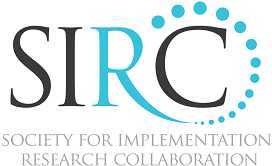Symposium 1 – May 16, 2013
1. Bridge over Troubled Waters: The Interactive Systems Framework for Dissemination & Implementation
Presenter: Abraham Wandersman, PhD, University of South Carolina
Abstract: Reducing the gap between research and practice requires a practical framework that brings funders, practitioners, researchers/evaluators, and consumers together for effective implementation and scaling up. Abe Wandersman and colleagues, in collaboration with CDC Division of Violence Prevention staff, developed the Interactive Systems Framework for Dissemination and Implementation (ISF) (2008 and 2012 special issues of the American Journal of Community Psychology). The ISF is now being widely cited and used in domains throughout public health and in education. The presentation will (a) introduce the ISF; (b) briefly describe one of the contributions of the ISF special issue: Practical Implementation Science; and (c) provide examples of bridge-building including at CDC and elsewhere.
2. Implementation of School-Wide Positive Behavior Interventions & Supports: The Influence of Emotion, Self-Efficacy, & Organizational Commitment
Presenter: Molly K. McDonald, MA
Authors: Zed Kramer, MA, Molly K. McDonald, MA, Brandon Rennie, EdS, Cameo Borntrager, PhD, University of Montana
Abstract: Both organizational and individual factors are known to influence implementation. However, there is little research investigating the interaction of these influences. For example, Klimes-Dougan et al. (2009) found counterintuitive results from a study examining factors related to fidelity: organizational culture was negatively related to fidelity; whereas, low job satisfaction was positively related to fidelity. Additionally, research on the role of emotion suggests complex dynamics are at work. Emotional valence has been found to function as a barrier and facilitator to implementation (Choi et al., 2011; Peters et al., 2011). Self-efficacy has also been identified as a factor involved in the implementation of evidence-based practices (Aarons et al., 2012). This study further assesses the relationship between organizational initiatives that appear facilitative and individual factors presupposed to affect implementation. Using self-report data from elementary school teachers, the relationships between emotion, self-efficacy, and organizational commitment are investigated within the context of an ongoing implementation project initially presented at SIRC 2011 involving School-Wide Positive Behavior Interventions & Supports (SWPBIS). SWPBIS emphasizes prevention, data based decision-making, and evidence-based practices for addressing difficult behaviors in youth. Implications for the potential existence of recursive feedback between affect and self-efficacy and its influence on organizational climate are discussed.
3. Seeing is Believing: Behavioral Rehearsal Methodology
Presenter: Shannon Dorsey, PhD, University of Washington
Authors: Shannon Dorsey, PhD,1 Rinad Beidas, PhD,2 & Wendi Cross, PhD3
1University of Washington; 2University of Pennsylvania, Perelman School of Medicine; 3University of Rochester Medical Center
Abstract: Evidence-based interventions (EBI) are available for a variety of problems, populations, and settings. Nevertheless, intervention effectiveness hinges upon the skill level of the people implementing them, making cost-effective training and supervision programs a critical focus for implementation science. Adult learning theory indicates that implementer skill development is most likely when active learning strategies, which include modeling and practice opportunities, are employed. In addition, behavioral rehearsal and standardized patient (SP) methods offers a more rigorous and objective means of assessing skill development and fidelity than commonly used strategies (e.g., self-report), and a more cost-effective strategy than audio or video coding. Understanding how to use BR and SP strategies for cost-effective dissemination and implementation, and more rigorous evaluation, is an important emerging research focus.
We present findings from three studies using similar BR methodology (Cross et al., 2007) as both a training and a fidelity assessment tool. Presentation will include an in-depth focus on the use of BR in a CBT common elements training initiative in Washington State for child and adolescent depression, anxiety, trauma, and behavior problems. Presentation will include BR vignette examples, decision points in BR use (e.g., actor selection; coding strategy), actual audio/video of BR, and study outcomes.
